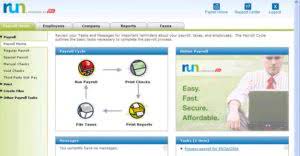
Regular inventory assessments guarantee your financial records are accurate and help you detect any inventory issues early on. This period can vary based on your business needs—it might be a fiscal year, a quarter, or even a shorter timeframe. FIFO is the more straightforward method to use, and most businesses stick with the FIFO method. Learn more about what LIFO is and its impact on net income to decide if LIFO valuation is right for you. Let’s say on January 1st of the new year, Lee wants to calculate the cost of goods sold in the previous year. A team of fulfillment fanatics who care about our clients’ businesses like their own.

Why Is the FIFO Method Popular?

No, the LIFO inventory method is not permitted under International Financial Reporting Standards (IFRS). Both the LIFO and FIFO methods are permitted under Generally Accepted Accounting Principles (GAAP). The FIFO (“First-In, First-Out”) method means that the cost of a company’s oldest inventory is used in the COGS (Cost of Goods Sold) calculation. LIFO (“Last-In, First-Out”) means that the cost of a company’s most recent inventory is used instead. Inventory is assigned costs as items are prepared for sale and based on the order in which the product was used. In general, inventory value should reflect the value of the item to your business.
FIFO vs. LIFO Inventory Valuation
- The costs of buying lamps for his inventory went up dramatically during the fall, as demonstrated under ‘price paid’ per lamp in November and December.
- As a result, LIFO isn’t practical for many companies that sell perishable goods and doesn’t accurately reflect the logical production process of using the oldest inventory first.
- The remaining inventory assets are matched to assets that were most recently purchased or produced.
- So, which inventory figure a company starts with when valuing its inventory really does matter.
- However, the company already had 1,000 units of older inventory that was purchased at $8 each for an $8,000 valuation.
- Each method has its strengths and may be more suitable depending on your business type and inventory management needs.
- Also, through matching lower cost inventory with revenue, the FIFO method can minimize a business’ tax liability when prices are declining.
In general, for companies trying to better match their sales with the actual movement of product, FIFO might be a better way to depict the movement of inventory. Under the LIFO method, assuming a period of rising prices, the most expensive items are sold. This means the value of inventory is minimized and the https://www.bookstime.com/ value of cost of goods sold is increased. This means taxable net income is lower under the LIFO method and the resulting tax liability is lower under the LIFO method.

Automate Your Shipping Process With Easyship Today
- Companies have their choice between several different accounting inventory methods, though there are restrictions regarding IFRS.
- Companies that undergo long periods of inactivity or accumulation of inventory will find themselves needing to pull historical records to determine the cost of goods sold.
- This method dictates that the last item purchased or acquired is the first item out.
- As costs vary, the way you value your inventory can impact both your tax bill and how healthy your company looks to potential investors.
- Plus, how your business can benefit from applying this inventory accounting method and how Easyship can help you simplify shipping today.
Thus cost of older inventory is assigned to cost of goods sold and that of newer inventory is assigned to ending inventory. The actual flow of inventory may not exactly match the first-in, first-out pattern. FIFO and LIFO inventory valuations differ because each method makes a different assumption about the units sold. To understand FIFO vs. LIFO flow of inventory, you need to visualize inventory how to calculate fifo items sitting on the shelf, each with a cost assigned to it.
Assume that the sporting goods store sells the 250 baseball gloves in goods available for sale. All costs are posted to the cost of goods sold account, and ending inventory has a zero balance. It no longer matters when a particular item is posted to the cost of goods sold account since all of the items are sold. This method assigns the same cost to each item, by dividing the total cost of goods by the total https://www.facebook.com/BooksTimeInc/ number of items available for sale. This method is also known as the weighted average and is calculated over a specific time period.
- Generally speaking, FIFO is preferable in times of rising prices, so that the costs recorded are low, and income is higher.
- FIFO is an assumption because the flow of costs of an inventory doesn’t have to match the actual flow of items out of inventory.
- The First-In, First-Out (FIFO) method assumes that the first unit making its way into inventory–or the oldest inventory–is the sold first.
- Average cost inventory is another method that assigns the same cost to each item and results in net income and ending inventory balances between FIFO and LIFO.
- When a business uses FIFO, the oldest cost of an item in an inventory will be removed first when one of those items is sold.

